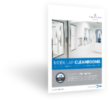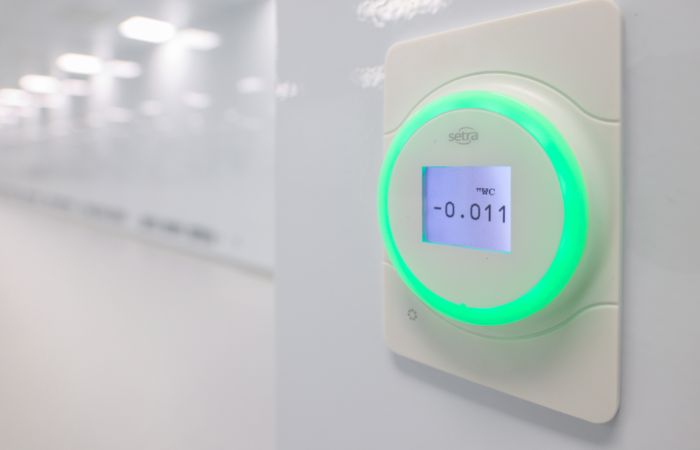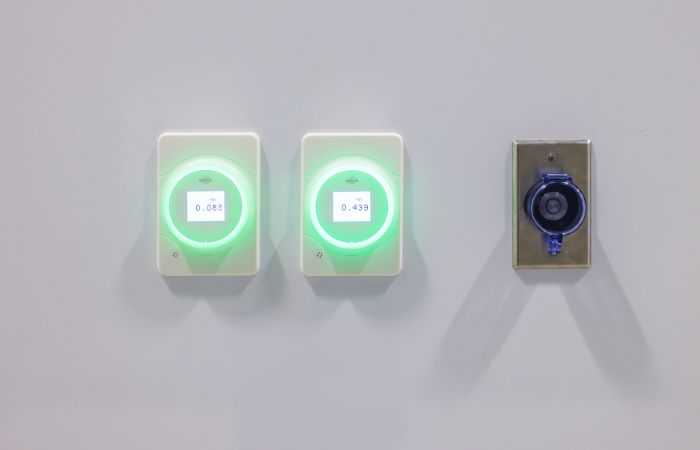
New Catalog
Download our Cleanroom Catalog
DownloadCleanroom environmental monitoring is critical for ensuring that the clean air pressure, temperature, humidity, and unviable and viable particle counts are all at appropriate levels.
You are probably familiar with cleanroom monitoring, but have you ever thought about the system that maintains the fundamental parameters of a cleanroom at the proper settings? This is centralized control, also known as a building management system (BMS) or a building automation system (BAS).
The difference between centralized control and monitoring systems is often hard to grasp since the technologies are similar. Both systems involve the installation of probes and transmitters to provide the system with the same environmental data.
This article on cleanroom environmental monitoring will help you understand the nuances and uses of monitoring systems and centralized controls, ultimately helping you choose the best solution to assure product quality and process integrity inside your controlled environment.
So, what is the difference between the two systems? The main difference rests in what the system will do with the data.
A control system will use the values from the sensors to take action and correct the error between the set point and the value read in real-time. Let’s take as an example a room temperature sensor (thermostat).
The control system will use that value to determine the signal to transmit to the heating element or the cooling system to keep the room within predetermined parameters.
As for the monitoring system, it would still take the same data but would store it only at a predefined interval and send an alert without correcting anything if the minimum or maximum threshold was crossed.
Data can be stored for months or even years and can be used to prove that rooms were kept within the limits of acceptable parameters for the production process.


If that process is subject to the Code of Federal Regulations of the U.S. Food and Drug Administration (FDA), the monitoring system must comply with the 21 CFR Part 11 Guidance. This standard imposes some security requirements on electronic records so they cannot be falsified.
When both systems are required and use the same parameters, two sensors installed for each data point are frequently seen. One communicates with the control system, and the other communicates with the monitoring system.
It can be interesting to have some redundancy; however, that means having twice as many sensors to calibrate, and drift between the two readings is inevitable.
This difference is unwanted since the control system adjusts itself in real-time with one set of data that might differ from the other set of data read by the monitoring system.
The cleanroom operator could then note a value out of the limits set by his or her monitoring system while the control system would operate thinking it is still within limits.
The aforementioned difference is why MECART prefers a solution that uses only one set of sensors that communicates with the controls and monitoring systems.
This limits the installation time and the maintenance required while giving the system better performance.
If data registration is not mandatory but the customer would like to have the data for their internal verification, it is still possible to export the data used by the controls system at a specific time interval. This prevents the need for two systems running in parallel and significantly reduces acquisition costs.
Therefore, the cleanroom operator must know her or his specific data requirements and what type of monitoring is better suited for production needs. This allows us to offer a personalized solution that covers the real needs of our customers.
By continuing to use the site you agree to our privacy policy.
I agree